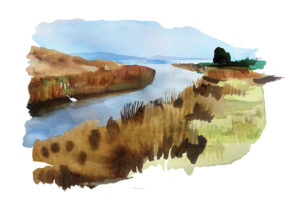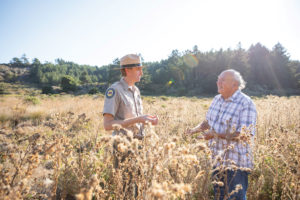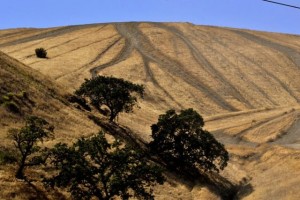Our April–June issue includes a 16-page special section on California’s state parks crisis, a topic that may well be the most important we’ve covered in our 11-year history. The facts change weekly—and the story could have many different endings, depending upon what all of us know and do in the next few months. We briefly covered the crisis in our January–March 2012 issue. But we’re convinced the topic deserves our (and your) continuing attention.
While our January article looked only at Bay Area parks slated for closure, the upcoming special section—“The Parks and the People: Keeping California’s State Parks Alive in Hard Times”— roams the entire state, bringing together the perspectives of grassroots activists, public officials, park employees, and leaders of statewide nonprofits. It charts a way forward, with suggestions and warnings from the California State Park Foundation’s Elizabeth Goldstein. And it takes you inside the agency charged with managing these lands, through an illuminating conversation with State Parks and Recreation director Ruth Coleman.
As author of both of Bay Nature’s recent state-park-related articles, I’ve had a lively last few months. Back in December, I had barely put away my notes from the first effort, when Publisher David Loeb called about doing another story three times as long as the first. I said yes—too quickly (nobody asks for in-depth reporting these days!)—and then began to lose sleep over the decision. Not enough time had passed to change the overall story. Would I be stuck telling essentially the same tale from more locations?
I needn’t have worried. The first of many newsworthy discoveries were the bizarre circumstances surrounding Mono Lake Tufa State Reserve’s placement on the closure list. The park’s main vulnerability was a lack of revenue. Yet it only cost the state $60,000 a year to run. I was incredulous: they were going to shut down a world-class park with 250,000 visitors a year for the lack of $60,000? A few months later, an ad hoc group of volunteers and state and federal land managers came up with the idea of a $3 parking fee. Why hadn’t the state parks department tried that before threatening closure? “The [closure] list developed quite quickly,” Geoff McQuilkin of the nonprofit Mono Lake Committee explained. “No opportunity was given to put solutions in place.”
Soon other examples of what seemed like precipitous park closures started piling up. At South Yuba River State Park, plenty of people were visiting—and each could have been a source of revenue. But many left their cars outside and walked in to avoid the fee at the gate. Across the state at China Camp State Park, “It looks like simply by changing the way we park cars for visitors, we could take a park that was losing $500,000 a year and make it revenue positive,” Assemblymember Jared Huffman (D-San Rafael) told me.
Again and again, it appeared, the state parks department was doing a whole lot of cutting, but hardly any creative thinking. Or as Huffman said in a phone interview, “There is some low-hanging fruit that—for reasons that just defy logic—hasn’t been pursued.”
That statement lit a fire under me. We were about to close down 70 parks, a quarter of California’s state park system. The units were historic and natural treasures. They had been lovingly purchased and tended by the generous generations before us. Yet apparently we hadn’t even tried simple, obvious solutions. As Tom Peters at the Marin Community Foundation put it, “Would we really want to face the people who are responsible for setting this up and say, ‘Well, we just couldn’t figure out a way to maintain that legacy?’ That would be an embarrassing historical conversation.”
I wanted to find out whether grassroots groups were rising to the challenge—and to understand the state’s side of the story, too. I knew the governor had asked for, and the legislature had approved, a $22 million cut in the parks department’s already bare-bones budget. Parks director Coleman had decided that the closure of 70 parks—mostly ones with low or no net revenues—was preferable to the starvation of all 279. And the department was given only three weeks to come up with a plan.
With only a month and a half to make sense of the whole kaleidoscopic story, I worked feverishly. I even had a Pollyanna phase, which I’ll tell you about next week.
The latest issue of Bay Nature magazine, including the special coverage on Parks and the People, has been mailed to subscribers today and will be available on newsstands.
But that won’t end our state park coverage. With the stakes for public lands in California high—and a closure date for dozens of parks looming on July 1—we’ll keep you posted with continuing online coverage.
We welcome your comments.

.jpg)



-300x222.jpg)